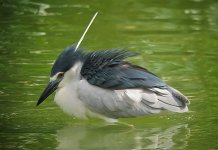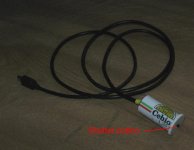I'm new to scopes but own a D50 camera body with a Nikkor 28-80 1:3.3-5.6G and Nikkor 70-300 1:4-5.6G zoom lenses. My work to date has been with the longer lens; however I'd like to reach out with the ED50 scope based on reading a variety of threads in BirdForum. Can my camera be used with this scope, and if so, what am I looking at needing in addition to the scope (and tripod and eyepiece).
Obviously, I'm pretty clueless :-O.
Thanks,
John C
Obviously, I'm pretty clueless :-O.
Thanks,
John C





